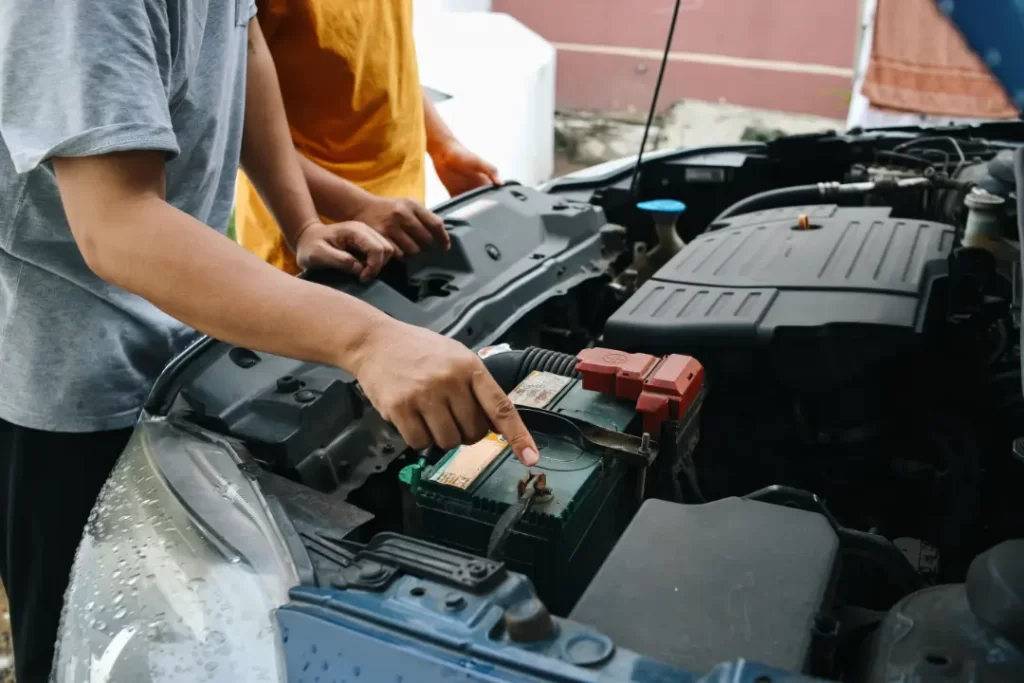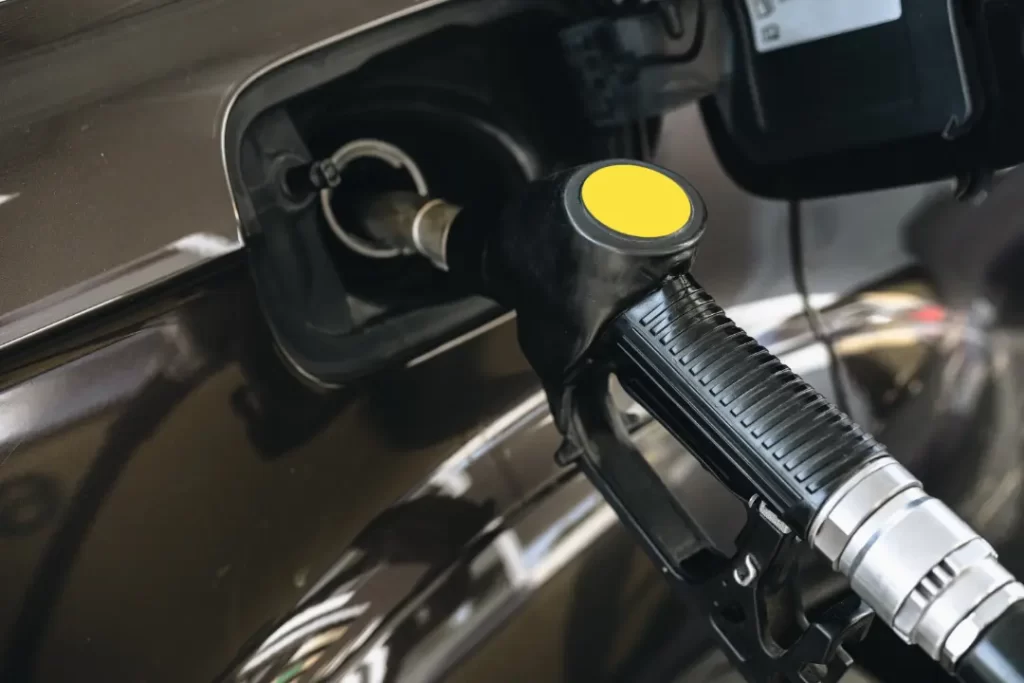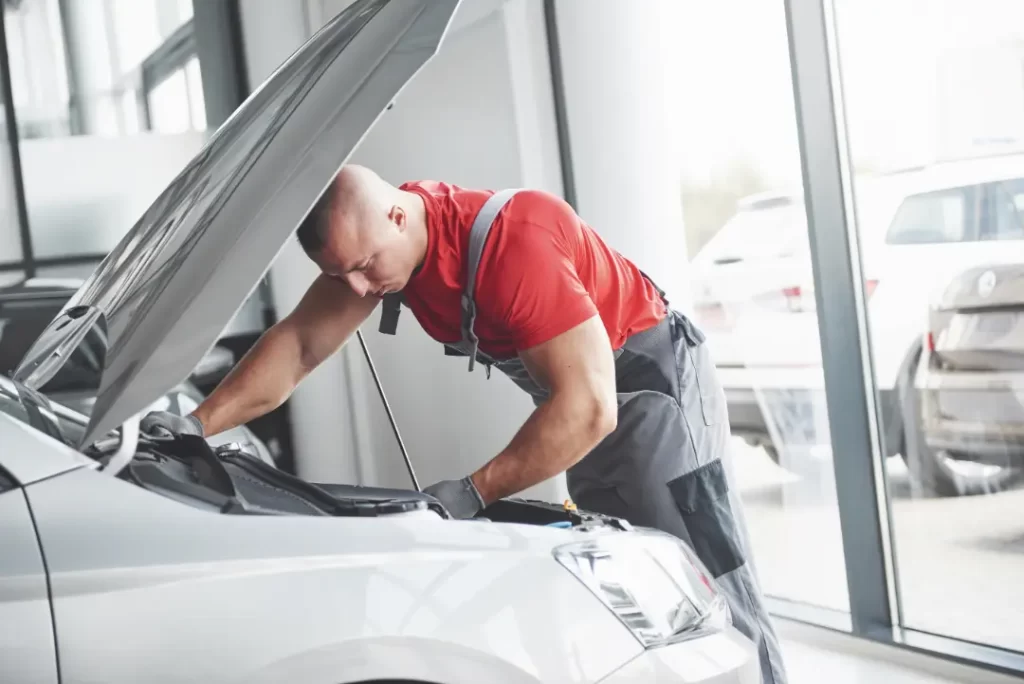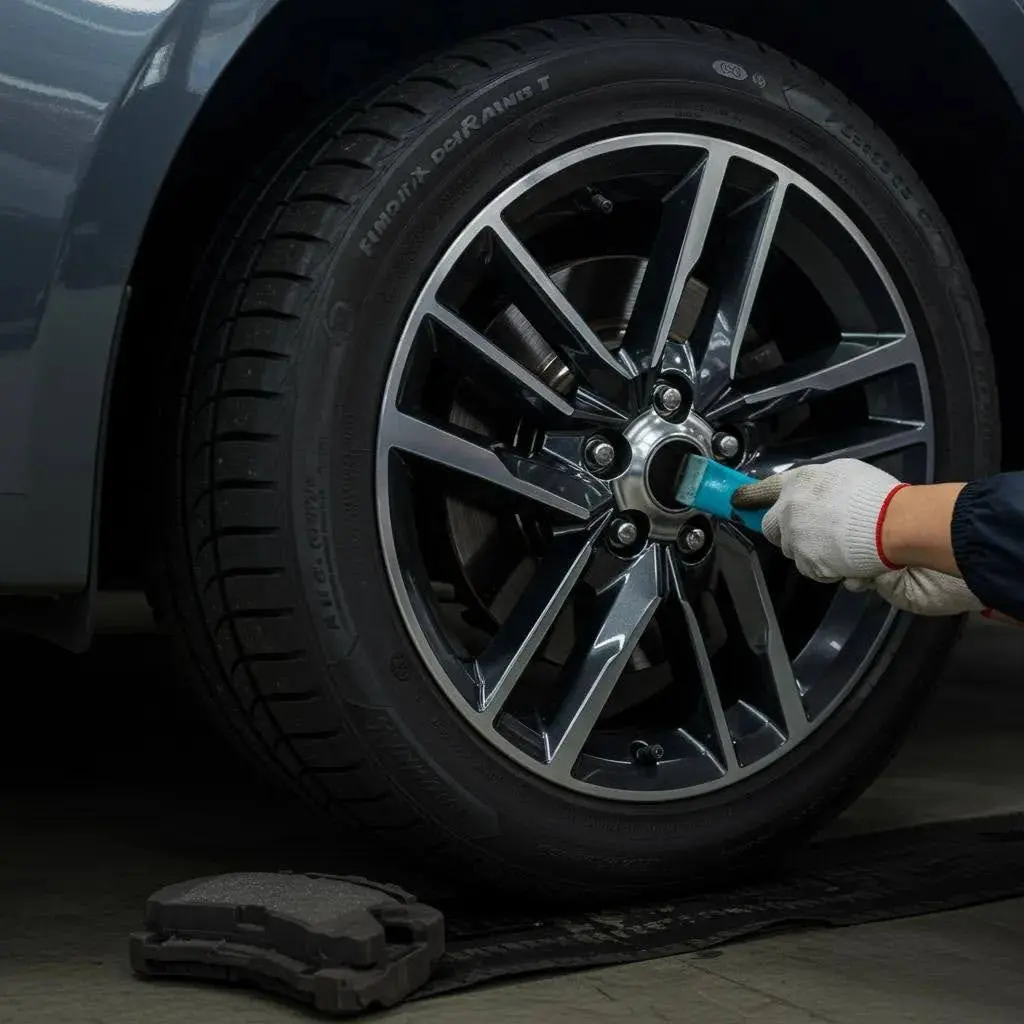Winter poses unique challenges for your vehicle. To ensure safe and hassle-free winter driving, you need to focus on key maintenance tasks. This guide will provide practical “tips to keep your car running smoothly this winter”, preventing issues like dead batteries, tyre problems, and other winter-related troubles. Follow these steps and enjoy a smooth driving experience during the colder months.
Key Takeaways
- Regularly check and maintain your car’s battery, tyre pressure, engine oil, and coolant levels to ensure smooth operation and prevent issues during winter.
- Inspect and service your vehicle’s windshield wipers, defroster, and climate control systems for optimal visibility and comfort while driving in harsh winter conditions.
- Equip your car with winter-specific tools and an emergency kit, and consider using a car cover to protect it from snow, UV damage, and environmental contaminants.
Check Your Car’s Battery
Winter’s cold temperatures can slow the chemical processes inside your car battery, reducing its ability to hold a charge. This reduced capacity can lead to a frustrating dead battery when you need to get on the road. Avert this issue by charging your battery weekly, particularly if it’s older than three years. Use a voltmeter to ensure your battery reaches at least 12.4 volts; if it falls below that, it’s time for a charge.
Keep your car’s battery connections clean and tight for optimal winter car care. Here are some steps to follow:
- Inspect the battery clamps and cables regularly for any signs of corrosion.
- To clean corrosion effectively, use a stiff wire brush treated with a paste made from baking soda and water.
- Ensure all electrical loads such as lights, wipers, and heaters are switched off before turning off the engine to prevent unnecessary battery drain.
It’s also wise to avoid using high-demand electrical accessories like heaters and heated seats for too long. These can strain the battery further, making it harder to start the car in cold weather. Adhering to these winter car maintenance tips will keep your battery in prime condition, helping you avoid a dead battery.

Inspect and Maintain Tyres
Cold temperatures can cause tyre pressure to drop, leading to dangerous driving conditions on icy roads. Properly inflated tyres improve fuel economy and enhance vehicle handling in winter conditions. Checking your tyre pressure monthly with a pressure gauge, per your vehicle’s owner’s manual, is a good practice during winter.
Tyre tread depth is another critical factor for safe winter driving. Here are some important points to remember:
- The minimum legal tread depth is 1.6mm, but experts recommend changing tyres at a 3mm depth in winter for better grip.
- Regularly checking tread depth ensures your tyres have sufficient grip to handle snowy and icy roads.
- For optimal performance, consider changing all four tyres at once.
Winter tyres are specifically designed for icy and snowy conditions and can significantly improve your vehicle’s handling and safety. While they are not suitable for summer driving, they are an excellent investment for the winter months. Adherence to these winter car maintenance tips will keep your tyres in excellent condition, ready to tackle winter’s challenges.
Refill Engine Oil and Coolant Levels
Frequent checks and refills of your car’s fluid levels are necessary for smooth and efficient engine operation during winter. Check the coolant level at least once a month to ensure the cooling system can handle freezing temperatures. To prevent failures in sub-zero temperatures, use a mixture of 60% antifreeze and 40% water, or up to 70/30 in the coldest regions.
Engine oil is equally important. Check the oil level once a fortnight and ensure it’s between the minimum and maximum markers to prevent engine damage. As the manufacturer recommends, use lighter engine oil that is suitable for cold weather conditions. Maintaining your car’s fluid levels will maintain its performance and prevent freezing issues.
Test Windshield Wipers and Washer Fluid
Given the importance of clear visibility in winter weather, ensuring your windshield wipers are functioning well is vital. Here are some tips to keep in mind:
- Inspect your wiper blades for tears or damage and replace them if necessary.
- Avoid using the wipers on an iced-over windshield to prevent tearing the rubber.
- Keeping the wipers up during heavy snow can make it easier to scrape snow or ice from the windshield and prevent the rubber from freezing and damaging.
Using winter-specific washer fluid helps keep your windshield clear of snow and ice, ensuring good visibility. This fluid type is designed to work in freezing temperatures, preventing the fluid from freezing in the reservoir and ensuring it can effectively clean your windshield when needed.
Keep Your Fuel Tank Full
Maintaining your fuel tank at least half full during winter is a preventive measure against fuel-related issues. A fuller fuel tank reduces the chance of condensation forming inside, which can freeze and block fuel lines. Gasoline has a lower freezing temperature than water, which helps prevent these issues.
Running low on fuel can clog the system, corrode the pump and filters, and potentially block fuel, preventing the car from starting. A full fuel tank guarantees smooth vehicle operation and avoids the hassle of a fuel-related breakdown in freezing conditions.

Check Defroster and Climate Control Systems
Testing your defroster and climate control systems before the onset of cold weather is crucial for keeping your windows clear and the interior warm during winter. Here’s how to do it:
- Turn on your vehicle and let it warm up for a few minutes.
- Set the temperature to the highest setting and turn on the defrost function.
- Adjust the fan speed to the highest setting.
- Make sure the air is blowing onto the windshield and side windows.
- Check that the air is warm and not cold.
- Wait a few minutes for the windows to clear and the interior to warm up.
By following these steps, you can ensure that your defroster and climate control systems are working properly and ready for the cold weather.
Ensuring these systems are functioning properly is crucial for safe driving in winter. Balancing the temperature inside and outside the vehicle using the climate control system or defroster can prevent fog and frost from forming on your windows. Maintaining these systems guarantees clear visibility and a cosy interior throughout winter.
Clean and Protect Exterior
Frequent car washes in winter are crucial for preserving your car’s value and lifespan, safeguarding the paint from road salt, sand, and de-icing chemicals. Keeping your car clean helps prevent accelerated wear and corrosion, paint damage, and rust, thus maintaining its value.
Applying a winter coating or sealant provides extra protection for your car’s paint. These coatings shield your vehicle from harsh winter elements and make cleaning off-road salt and de-icing chemicals easier. Products like Gyeon’s Q2m Wet Coat or Meguiar’s Hybrid Ceramic Liquid Wax can offer long-lasting protection and water-beading properties.
A pre-wash can help remove harmful winter elements from the car’s paintwork without breaking down existing waxes or sealants. Additionally, using a car dryer after washing can prevent water spots and keep your hands warm during winter. Adherence to these tips will maintain your car’s exterior in prime condition throughout winter.
Prepare an Emergency Kit
Keeping an emergency kit is a necessity for winter driving. Warm clothes and blankets are necessary to keep you warm in case of a breakdown. High-visibility clothing is important for being seen by other motorists if you need to leave your vehicle in the dark.
Include essential tools in your kit, such as:
- a shovel to dig out your car if you get stuck in deep snow
- an ice scraper and de-icer for clearing your windshield
- a large torch with spare batteries or a wind-up torch for visibility during winter roadside emergencies.
Don’t forget to pack:
- Food and drink, including hot drinks in a flask for long winter journeys
- A full fuel tank to avoid being stranded in snow or traffic
- A phone charger to keep your phone battery topped up during winter trips
A well-prepared emergency kit ensures you’re equipped for any unforeseen winter driving situations.
Avoid Short Trips
In winter, cold weather takes its toll on short trips, straining your vehicle’s engine, starter motor, and ignition system and ultimately affecting its performance. The engine temperature may not reach optimal levels during short journeys, leading to incomplete combustion and carbon buildup. Oil may not reach optimal operating temperature, reducing its effectiveness in lubricating engine components.
Short trips often involve frequent engine starts, putting additional strain on the starter motor and ignition system. Combine errands into longer trips to keep your vehicle running smoothly and avoid these issues. Minimising short trips can reduce wear and tear on your car throughout the winter.
Regularly Service Your Car
Routine car servicing is vital to maintaining optimal performance and safety, particularly during winter. It’s recommended to service your car every 12,000 miles or 12 months, but regular checks can extend your car’s lifespan. Performing a minor service at least once a year helps prevent expensive repair bills or unsafe driving situations.
As winter arrives, a specific car winter service ensures your vehicle is ready for the coldest months. The service includes:
- A full battery check to prevent failure due to freezing temperatures
- Examining brakes to ensure they function correctly on slippery roads
- Brake repairs
- Replacement of oil and air filters
These are essential parts of scheduled car services.
Using genuine parts and professional services ensures that all repairs and maintenance are done to the highest standards. AVS, based in Sittingbourne, Kent, offers a wide range of automotive services, including winter-specific checks, and stands out for its commitment to affordability, transparency, and customer satisfaction. Frequent car servicing guarantees your vehicle’s smooth and safe operation throughout the year.

Use a Car Cover
A winter car cover is a cost-effective investment to shield your vehicle from severe weather conditions and prolong its lifespan. A good car cover offers protection from:
- Damages caused by UV rays
- Dust
- Pollen
- Bird droppings
Prolonged exposure to moisture from melting ice can damage a car’s mechanical and electrical systems, so a well-fitted car cover acts as a water-resistant barrier.
A car cover has several benefits during the winter season:
- It protects your car from snow, preventing the need for extensive snow removal and potential damage to the paint.
- It prevents frozen wipers from sticking to the windshield.
- Reinforced tie-down loops and side grommets enhance the car cover’s protection against wind, ensuring it stays in place during strong gusts.
- A car cover maintains your car in top-notch condition throughout the winter.
Summary
Winter car maintenance is essential for keeping your vehicle running smoothly and safely during the coldest months. By following these tips, from checking your car’s battery and maintaining tyre pressure to preparing an emergency kit and using a car cover, you can ensure your car is ready to face winter’s challenges. Stay proactive and diligent with your car maintenance, and you’ll enjoy a trouble-free winter driving experience.
Frequently Asked Questions
How often should I charge my car’s battery in winter?
You should charge your car’s battery at least once a week during winter, especially if it’s over three years old. Regular charging helps prevent issues caused by cold weather and ageing.
What is the recommended tyre tread depth for winter driving?
Experts recommend changing tyres when the tread depth reaches 3mm for better grip and safety while driving in winter.
Why is it important to keep the fuel tank full in winter?
Keeping the fuel tank at least half full in winter is important to prevent condensation from freezing and blocking fuel lines. Doing so can help avoid potential car issues and ensure smooth operation.
What should be included in a winter emergency kit?
Ensure your winter emergency kit includes warm clothes, blankets, high-visibility clothing, a shovel, an ice scraper, food and drink, and a phone charger. These items can help you stay safe and prepared during winter emergencies.
How often should I service my car?
You should service your car every 12,000 miles or 12 months to maintain optimal performance and safety. Regular checks are essential to ensure everything is in good condition.


